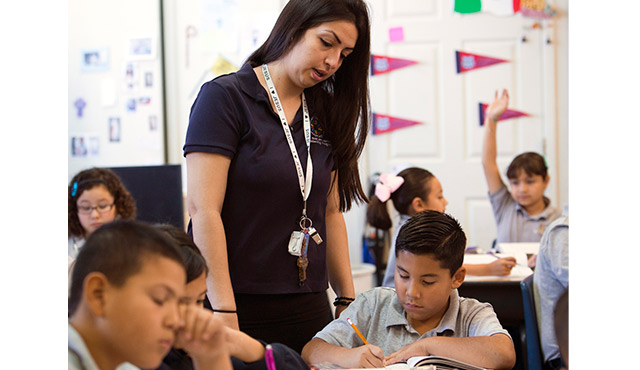For the past two decades, the Center for Applied Research in the Apostolate (CARA) at Georgetown University has been publishing The CARA Report, a quarterly newsletter that presents what it calls “the most important and up-to-date research on American Catholics and the Catholic Church in the United States.”
The following is a distillation of some of the topics addressed in the latest CARA Report for winter 2015:
Parent-Child Faith Transmission
Are parents passing along their faith to their children in a rapidly changing society? Have the social and cultural changes in the past 50 years thwarted the parents’ ability to do this? And why are some parents better at it than others?
Vern L. Bergston of the University of Southern California addresses those questions in his new book, “Families and Faith: How Religion Is Passed Down Across Generations.” The book compiles data from a 35-year study of more than 3,500 respondents from 357 three- and four-generation families, which were generally representative of Southern California in 1970. The findings were arranged in six groupings: Evangelical Protestant, Mainline Protestant, Catholic, Jewish, Mormon and None.
Among the findings:
- “If the parents are not themselves involved in religious activities, if their actions are not consistent with what they preach, children are rarely motivated to follow in their parents’ religious footsteps.”
- Closeness of the parental relationship is key. For example, for Catholics in 2005 the parent-child faith transmission rate was 47 percent when the relationship was close, but only 33 percent when it was not close.
Catholic Schools Linked to Church Vitality
The present and probable effect of a Catholic school education on religious life was the subject of a presentation by CARA researcher Mark Gray to the United States Conference of Catholic Bishops last November. Among the findings:
- Weekly attendance at Mass among the members of the Millennial Generation (born 1982 or later) is 34 percent for those who attended a Catholic primary school and 39 percent for those who attended a Catholic secondary school. That number falls to 5 percent for those who never attended a Catholic school.
- The proportion of never-married Millennial male Catholics who ever considered becoming a priest or brother was 26 percent among those who attended a Catholic primary or secondary school, but only 9 percent for those with no Catholic schooling.
- While only 37 percent of post-Vatican II Catholics (born 1961-1981) and 23 percent of Millennial Catholics attended a Catholic school, half or more of new priests and brothers attended Catholic primary schools, as did 41 percent of new sisters and 45 percent of young lay ecclesial ministers.
Fallen-Away Catholics Explain Why They Left
A team of social scientists at Benedictine University in Illinois identified four major reasons Catholics gave for separating from the Church:
- Issues with Church doctrine, especially among the more highly educated.
- Lack of connection to the Church—spiritual needs not being met, lack of interest in going to Mass, dissatisfaction with the Mass, lack of belief in the teachings of the Church.
- Church scandals, particularly cited by those 50 and older.
- A perceived lack of Christian values at the level of Church, parish or priest.
The research provided a summary of the views of 575 inactive and 827 active Catholics. Among the inactive group, the researchers found that “most respondents do not consider themselves members of another faith community and some indicate a willingness to return to their parish if their concerns were addressed.”
Active Catholics said the most important reason they continued to attend their parish is its sense of community as well as access to the sacraments, particularly the Eucharist.
Religious Influence in Public Life
A recent Pew survey asked, “At the present time, do you think religion as a whole is increasing its influence on American life or losing its influence?” Nearly three-quarters of the respondents (72 percent) said they thought religion was losing its influence.

